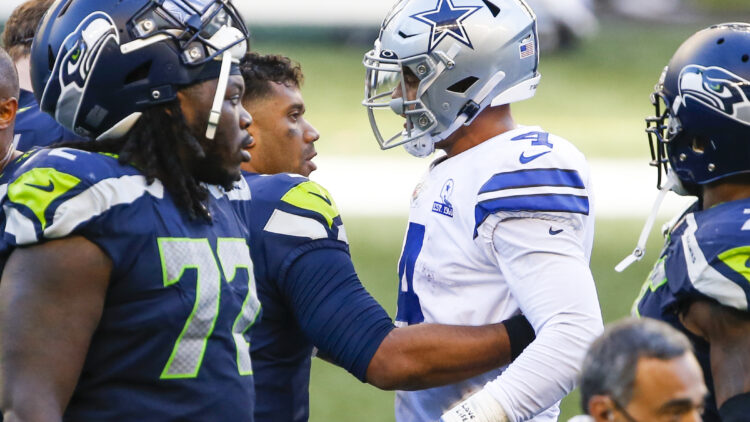Dak Prescott Teeters on “Overpaid” Classification

If an NFL team was personal finance, the quarterback would be your house payment. It typically is your largest expenditure, and it is a critical decision in both circumstances. Take away the millions, and an NFL franchise has the same limitations as most Americans — there is a finite amount of money to spend for all needs.
In professional football, those are players. In our reality, those are our obligations. If you spend too much on the wrong quarterback, it is no different than committing too much of your salary on housing. The term in personal finance is “house poor,” meaning the costs of homeownership strain other areas of needs to the point that sacrifices are necessary.
In the NFL, the same issue exists due to the salary cap. When a team invests too much in the wrong quarterback, there is no way to bring sufficient talent to elevate the overall team for success.
Is Dak Prescott “the one?” As a Washington fan, it is difficult to say. He is accomplished in almost every aspect of the game. In his first five years, he has led his team to three winning seasons and two playoff births. He has put up statistics on paper that stand up to the elite quarterbacks in the league. He is a class act of a player on and off the field and ia a leader that inspires his team.
The problem with Dak is obvious, though. Despite appearing in three playoff games, he has given his fans a 1-2 record in postseason contests. The elite quarterbacks of this league not only perform on paper but must excel in January and February games.
That is the harsh reality.
Without that performance, a team is investing 18% of their salary cap on this player, money it could use elsewhere.
There is no doubt that Dak Prescott deserved a contract to avoid the free agency he could benefit from. The reality is that he has generated similar performance in recent years as Kirk Cousins, who is also collecting the same salary cap number in 2022.
Unfortunately, both players have struggled to deliver playoff successes.
In the salary cap era of football, teams will eventually have to realize that they can no longer afford to tie up nearly 20% of their salary cap for a quarterback who has not generated playoff wins on a regular basis. Fair or not, compare these quarterbacks to Patrick Mahomes. In his first three years as a starter, he has delivered three deep playoff runs and a Lombardi trophy. Through some legal work that looks more like magic, his salary cap hit is about 4% of the team cap limit.
Be careful when trying to keep up with the Jones’ here. Mahomes has a contract that extends the next 11 years. The Chiefs have mortgaged future years in this maneuver, with an almost vertical climb in cap hit for Mahomes in the next few years — rising to nearly $50M annually. Wowzers.
There is no doubt that Mahomes deserves to be well compensated for his performance, but the challenge will be to restructure or maintain a winning team around him for the years to come. Without drastic change, it appears that the Chiefs will struggle to be competitive in three seasons or less. This is an assessment of the simple finances of the team. Despite the relative certainty of the struggles ahead, KC fans need to appreciate that their team has built sufficient talent to have a wide window for continued success in the near future.
Is Dak Prescott truly overpaid? Yes and No. On paper, most teams would love to have his skills at their disposal. He has delivered top 10 quarterback stats regularly. That warrants a payday. What challenges his deal is the lack of winter performance leading to championships. It is hard to justify top-tier quarterback money just so he can join his fans in watching the playoffs each season.
